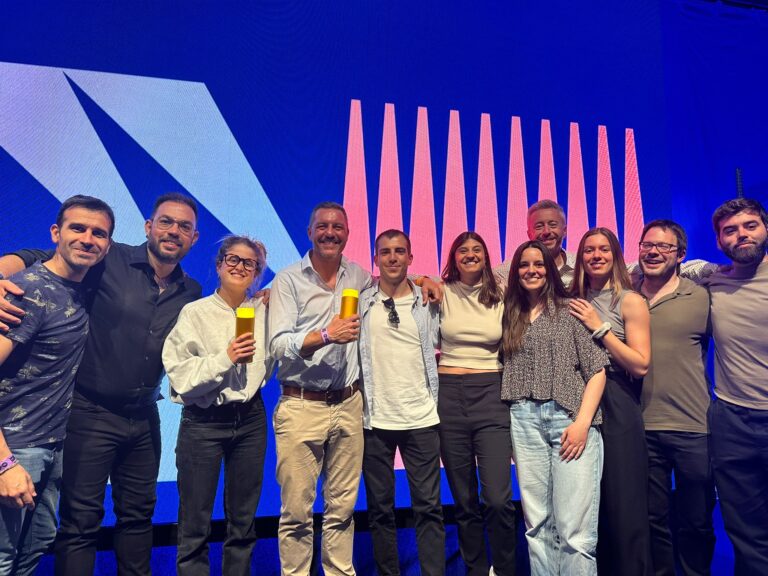This April 23rd, the Diada de Sant Jordi will be celebrated in all its magnificence, filling the streets with culture, colour and passion in one of the most outstanding festivities in Catalonia. Tradition has it that on this date most people give flowers and books to their loved ones.
If you are passionate about industrial design, the Diada de Sant Jordi is an excellent opportunity to discover new books on this discipline. In this article, we will recommend some of the best industrial design books you can find so that you can expand your knowledge and improve your skills in this field.
Industrial design is a discipline that combines creativity and technology to create products that are useful and attractive. From the creation of a new kitchen utensil to the development of a new means of transport, industrial design is present in many aspects of our daily lives.
If you are interested in learning more about this discipline, i-mas recommends some of the most outstanding books on industrial design. These books will help you understand the basic principles of industrial design, learn new techniques and explore the latest trends in the field.
So get ready to fill your basket with books on the Diada de Sant Jordi and discover the best books on industrial design. Let’s get on with it!
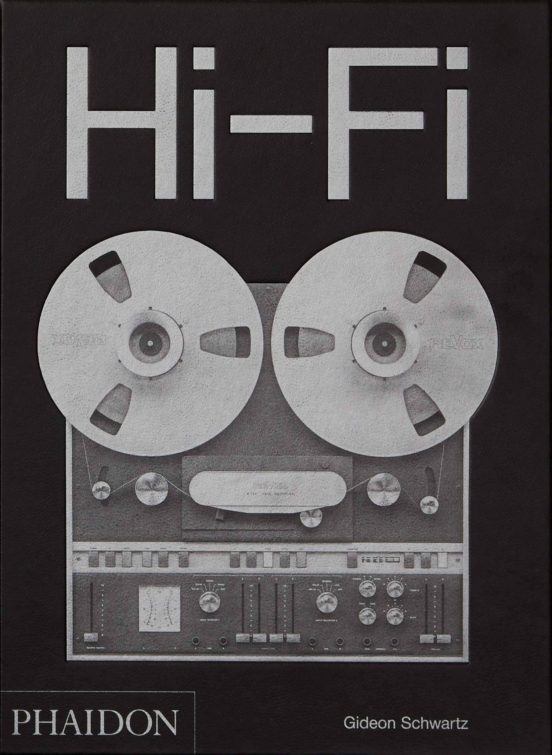
“Hi-Fi. The History of High-End Audio Design” de Gideon Schwartzes.
A look beyond the world of high-end audio design for passionate collectors, obsessive audiophiles and design aficionados. This unique book explores how, when and why the world fell in love with the look, feel and sound of high-end audio equipment. Hi-Fi traces this fascinating evolution from the 1950s to today (and tomorrow), taking readers through today’s renaissance of all things analogue and the emergence of cutting-edge designs for die-hard audiophiles.
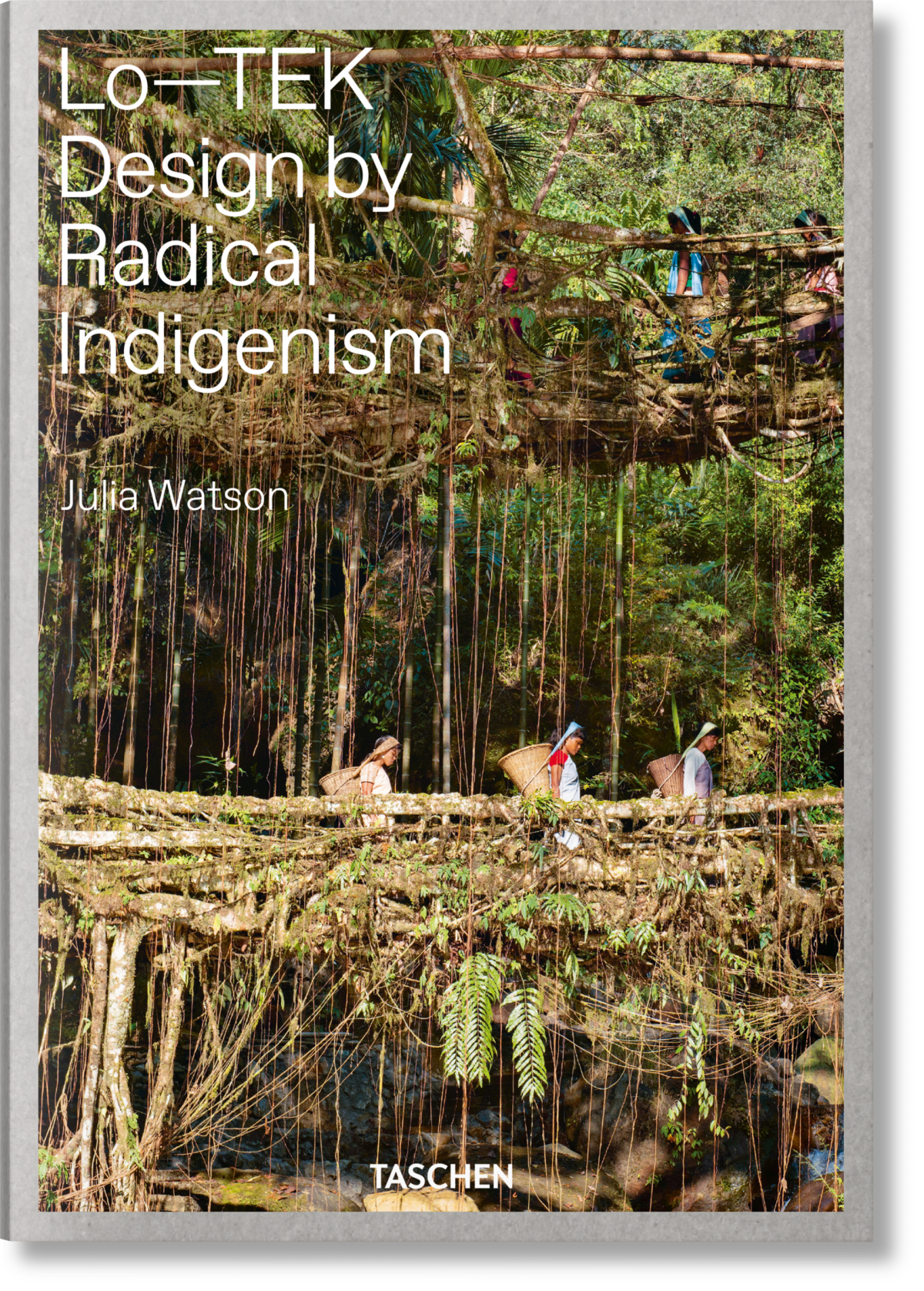
“Lo-TEK. Radical Indigenism Design” de Julia Watson.
Designers understand the urgency of reducing humanity’s negative environmental impact, but perpetuate the same mythology of technology that is based on exploiting nature. By responding to climate change by building solid infrastructure and favouring homogenous high-tech design, we are ignoring the age-old knowledge of how to live in symbiosis with nature. Without the implementation of soft systems that use biodiversity as a building block, designs will remain inherently unsustainable. In an age of high technology and extreme weather, we are drowning in information while starving for wisdom. Enter Lo-TEK, a design movement that draws on indigenous philosophy and vernacular infrastructure to generate sustainable, resilient, nature-based technology. With a foreword by anthropologist Wade Davis and covering 18 countries from Peru and the Philippines to Tanzania and Iran, this book explores age-old human ingenuity on how to live in symbiosis with nature. Manifesting the revelation of hidden knowledge, the book’s ingenious Swiss binding features an open spine, revealing the book’s construction.

“Lo esencial: El diseño y otras cosas de la vida” by Miguel Milá.
This is not a book for designers, or only for designers, the practical advice of this award-winning artist who defines himself as an “inventor and bricoleur” can change our daily lives, just as, for different types of readers, the advice of Ferrán Adrià or the rules of Marie Kondo have done for different types of readers. This is an indispensable book to rethink our personal world; to surround ourselves with useful and beautiful objects; to recognise the aberrations of design; to recognise what is truly important; to know how to live in harmony with the elements and nature, but also with others, starting with our own family (“Be useful and they will use you”). What is essential is the theoretical and vital legacy of the greatest Spanish designer, whose work confirms the definition of “classic”: that which cannot be done better.
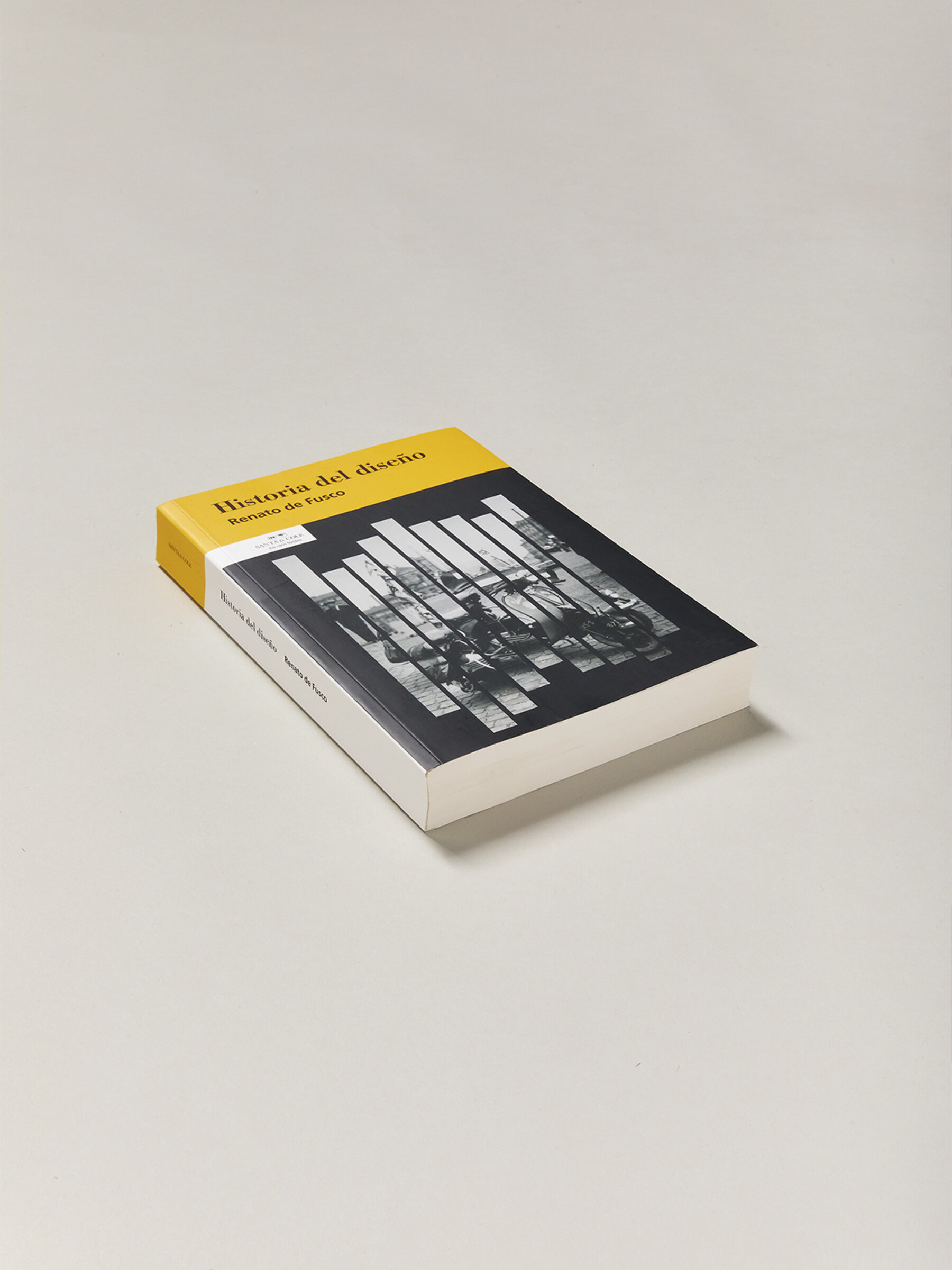
“History of design” by Renato De Fusco.
In this work, De Fusco proposes a “historiographic artifice” consisting of establishing four interrelated moments or factors, which represent a sort of structure invariably present in all manifestations of true design: the project, production, sale and consumption; his famous “quadrifoglio” or four-leaf clover, widely adopted later by many authors. Once the structural parameters of the “quadrifoglio” have been established, De Fusco traces a journey from the printing press to the present day, not to establish what design is but to describe how it manifests itself, offering a cultured and entertaining discourse that ends up focusing on a concise and unitary idea of design and its implications.
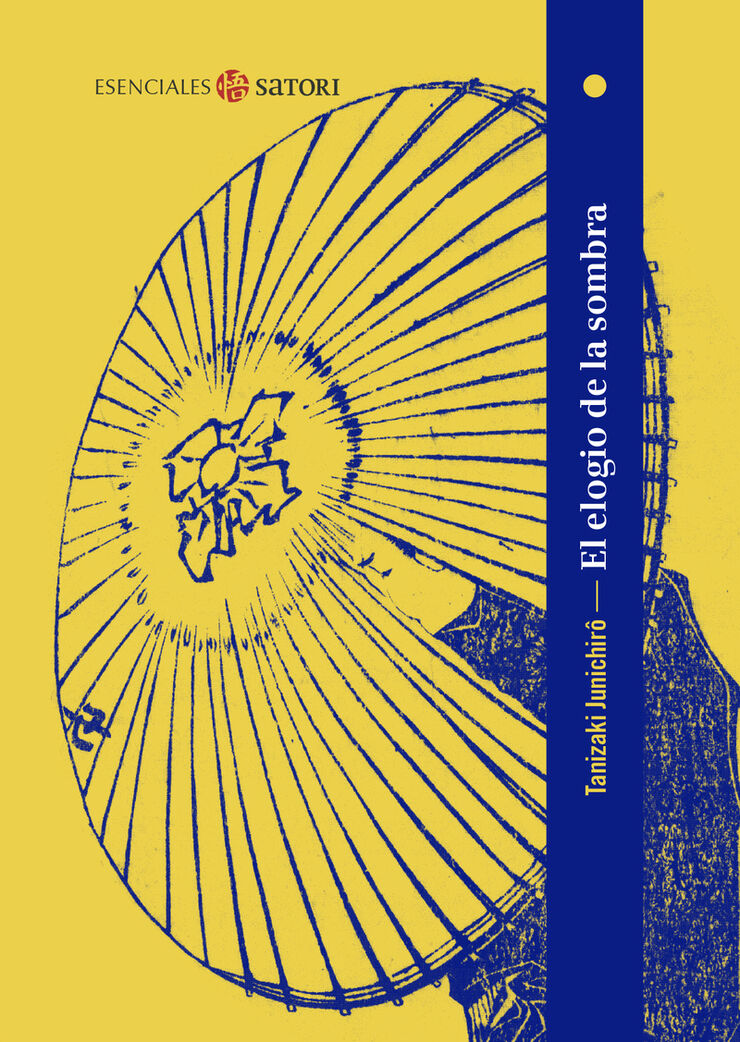
“The Praise of the Shadow” by Junichirō Tanizaki.
This author reveals Japanese society’s perceptions and secrets about beauty, a concept that in Japanese cultural values and ideas cannot be understood without the presence of shadows in everyday life. In the West, the greatest ally of beauty has always been light. In traditional Japanese aesthetics, on the other hand, it is essential to capture the enigma of the shadows. Beauty is nothing but a play of chiaroscuro resulting from the subtle modulations of shadows. Tanizaki constructs a way of perceiving the world in which he highlights the importance of shadows in the East, in contrast to Western civilisation.
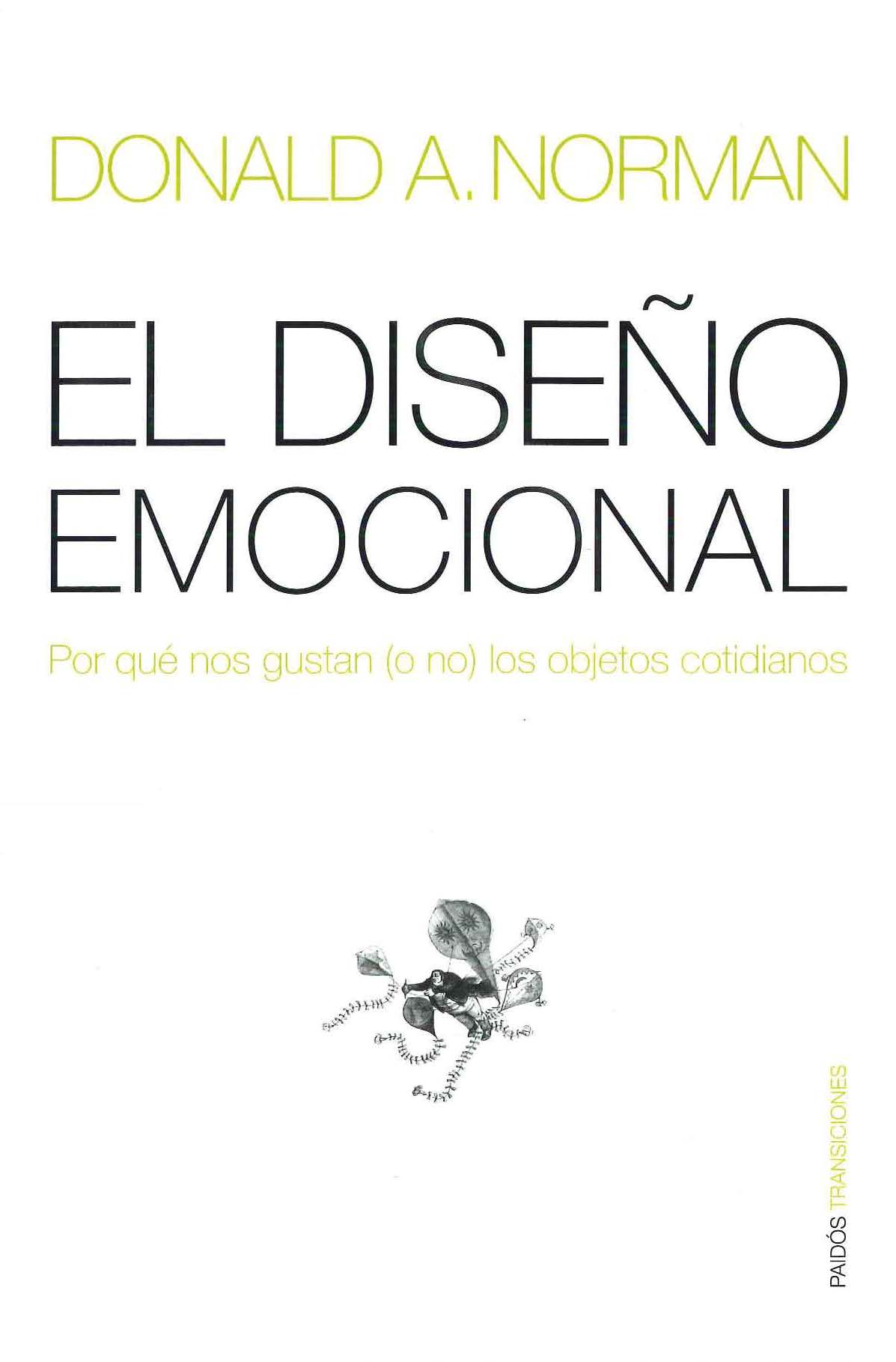
“Emotional Design” by Donald A. Norman.
In this book, the author explores how design can influence users’ emotions and perceptions. Norman also discusses how design can help create products that are more intuitive and easier to use. Haven’t you ever wondered why wine tastes better when served in elegant designer glasses? Or why does the car, once washed and polished, seem to drive more easily? Recent research has shown how objects that are attractive to us actually work much better. We don’t just use a product, we establish an emotional relationship with it. Emotional Design shows, for the first time, that whenever we encounter an object, our reaction is determined not only by how well it works, but also by how it looks, whether we find it attractive and even by the nostalgia it arouses in us. When a product is aesthetically pleasing and, moreover, flatters the ideas we have of ourselves and society, what we experience is positive.

“Routledge Sustainable Product Design Handbook” by Jonathan Chapman.
This book is about how design can contribute to environmental sustainability. The authors explain how products can be designed to be more resource efficient, and how products can be created that are easier to recycle or reuse. As a cultivated form of invention, product design is a profoundly human phenomenon that allows us to shape, modify and alter the world around us, for better or worse. The recent emergence of the sustainability imperative in product design forces us to recalibrate the parameters of good design in an unsustainable era. Written by designers, for designers, the Routledge Handbook of Sustainable Product Design presents the first systematic overview of the burgeoning field of sustainable product design. Brimming with intelligent insights, critical proposals, practical examples and rich theoretical analysis, this book is an essential reference point for scholars and practitioners at the intersection of product design and sustainability. The book takes readers deep into our engagements with the world designed to advance the social and ecological purpose of product design as a critical 21st century practice.

Dan Saffer’s “Interaction Design”.
Between the technology that powers our devices and the visual and industrial design that creates the aesthetics of the products lies the practice of figuring out how to make our products useful, usable and desirable. This thought-provoking new edition of Designing for Interaction offers the perspective of one of the most respected experts in the field, Dan Saffer. This book will help you learn how to create a design strategy that differentiates your product from the competition how to use design research to discover people’s behaviours, motivations and goals in order to design for them how to employ brainstorming best practices to create innovative products and solutions how to understand the process and methods used to define product behaviour It also features interviews and case studies from industry leaders on prototyping, designing in an agile environment, service design, ubicomp, robots and much more.

“Engineering for Sustainability. Practical Guide to Sustainable Design” by Gerald Jonker & Jan Harmsen
This book provides engineers with the information they need to design sustainable processes, products and value streams. It sets out the current consensus on sustainable development for four levels of context or sub-contexts: Planet, Society, Business and Engineer. It also covers all the stages involved in a design: from problem definition, through the synthesis of possible solutions, the analysis and improvement of these solutions, to the evaluation of the final solution. For each stage of design, methods and guidelines are provided in relation to the goal of a sustainable solution: a solution that meets both people’s needs and all context-specific constraints with respect to the planet and prosperity.
These books are just a few of the many titles available on industrial design. If you are interested in industrial design, I recommend that you read some of these books to improve your skills and knowledge in this discipline.
Enjoy reading!



